Sweet, vegetal and nutritious, bamboo leaf tea is a smooth and bright tea to add to your daily pot!
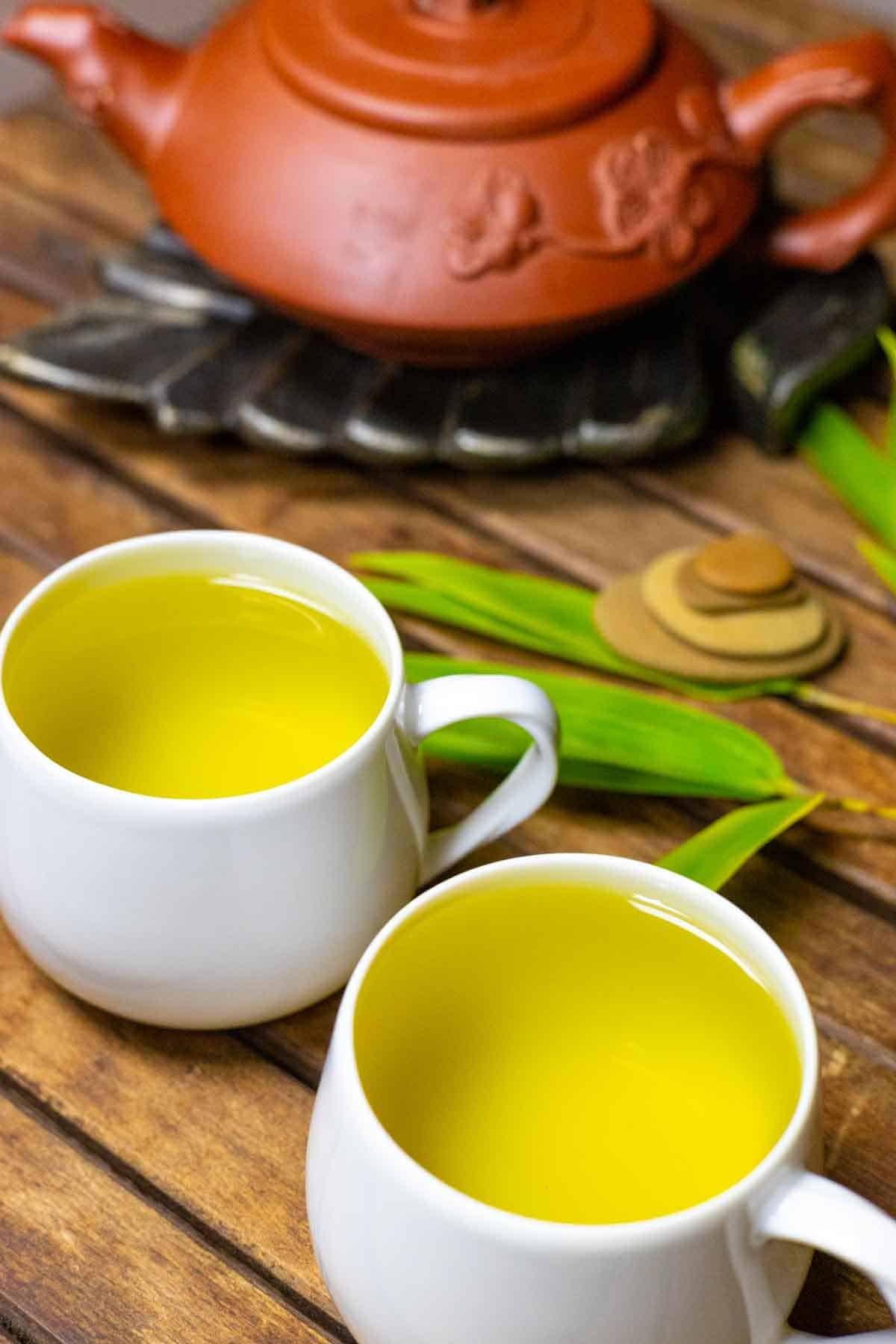
Magical and dazzling, bamboo has an exotic feeling and its beauty is somehow calming. Did you know its delicate looking leaves can be brewed into an extremely healthy and delicious tea?
For hundreds of years, bamboo has been used in both Chinese and Ayurvedic medicine due to its health benefits and healing properties. It is a very sustainable crop, with both the leaves and stems being used for teas.
Sip this wonderful brew on its own, or serve with a Keto Bibimbap bowl, make a pot to compliment some Homemade Asian Cabbage Rolls, or complete a keto Asian inspired meal of delicious Lo Mein with Low Carb Asian Noodles or a Low-FODMAP Asian Tuna Salad.
What is bamboo leaf tea?
This delicious brew is made from young bamboo leaves that are picked, washed and dried in the sun.
It has a sweet flavor that can balance mind and body, without any caffeine. It is a delicious and very healthy caffeine free tea alternative to green tea.
Bamboo has the highest amount of silica of any plant, 10 times the amount of popular herbs such as horsetail and nettles. Horsetail contains about 8% silica, where bamboo leaf contains about 70%. Silica is what contributes to bamboo’s strong, fast growth and flexibility.
What does bamboo tea taste like?
The flavor is sweet and vegetal (slightly grassy), with notes of cornsilk and cocoa. It’s very much like traditional green teas. It’s very mild, refreshing and light, with a pale green to light yellow color.
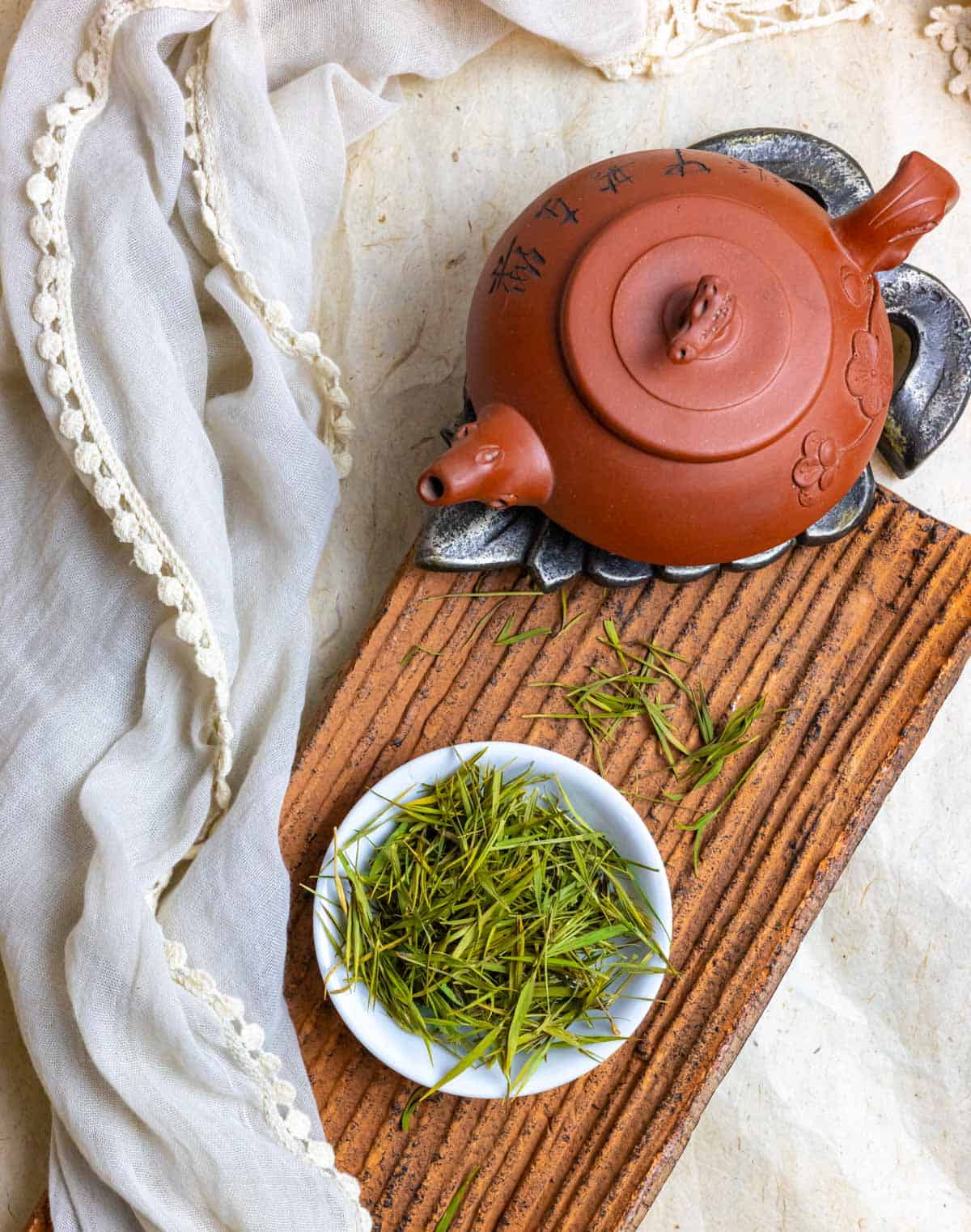
Bamboo tea benefits
There's so much to love about this elegant brew, including its numerous health benefits:
- It's rich in antioxidants and amino acids
- High in silica, which has been linked to increased hair growth and nail strength
- Supports collagen production, supporting rejuvenation and elasticity of skin
- Contributes to healthy bones and increased bone density
- Promotes cardiovascular and digestive health
- Drinking bamboo tea and homemade bone broth may have synergistic health benefits. The silica in the tea is a building block of collagen and bone broth is a delicious source of natural collagen. Consuming both as part of a healthy routine can rejuvenate your skin, aid in muscle repair and even reduce inflammation.
- Contains B vitamins (including folic acid), vitamins A and E, beta-carotene and anthocyanins
- Has a high mineral content, including silica, magnesium, potassium, iron and copper among others
- Contains about 4% soluble fiber, which equals about 1g of fiber per cup
- Can easily be included in special diets. It’s keto-friendly, paleo, AIP and Whole30 compliant and is a delicious low-FODMAP tea.
Where to buy
The leaves are available as either a loose tea or in tea bags. My favorite way to brew it is with loose leaves, especially when brewing a whole pot. However, having it pre-packaged is very convenient and portable when on-the-go or for making a quick cup.
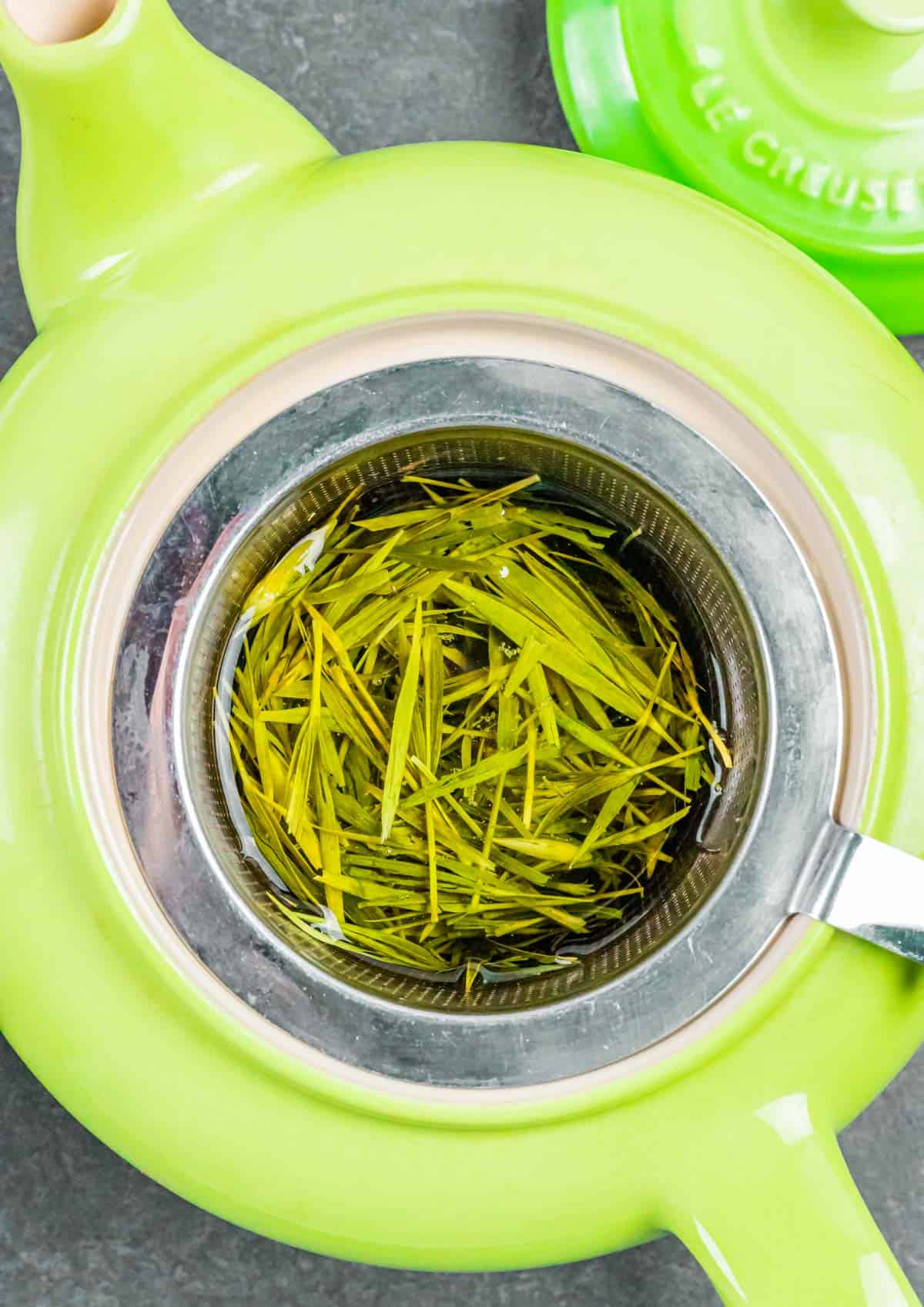
How to brew
Brewing loose leaf tea is a very simple process. There are a variety of brewing methods and the brew time can be adjusted according to your personal tastes.
- Use 1 teaspoon (or 1 tea bag) per cup (which is a good healthy 'pinch' of leaves)
- Heat the water to 200F degrees (8oz of water per cup)
- Steep for 3-5 minutes and enjoy
Serve with a squeeze of lemon, light sweetener or simply by itself (my favorite).
It can be infused up to three times.
How much to drink
Although no side effects of bamboo tea have been reported, moderation is always encouraged. For healthy benefits, consumption can be up to 3 cups per day.
If drinking for the benefits of silica, it’s suggested to drink a few cups daily for 2-3 months before seeing any changes in hair or nails.
How to drink
Enjoy this brew hot or cold. It has a light sweetness that is enhanced when chilled and makes a delicious iced tea.
How to store tea
How to store tea bags
Tea should always be stored in a way that protects it from exposure to air, light, moisture and heat. If it’s pre-packaged in individual bags, it should be kept in a sealed container in a cool, dark place. Many pre-packed teas are individually wrapped, which helps to protect the contents from moisture. If the bags come in a box, it’s best to keep them in the original box, in a cabinet, drawer or on a dark shelf, away from heat sources, such as a window or a stove. You can also find ceramic tea caddies (which are particularly cute) to easily dispense individual bags.
How to store loose leaf tea
Loose leaf (or unpackaged varieties) should be kept in an air-tight container that protects the leaves from moisture, heat, light and air. Keeping teas in a cool, dark environment preserves the flavor and aroma that diminishes with exposure to these elements. Ceramic or tin containers that are made specifically for tea storage are perfect for keeping out light and moisture. Mason jars can also be used if stored in a dark place like a cupboard, pantry or drawer.
Tea canisters are a great option, as long as they have an air-tight seal. There are many ceramic ornamental options, as well as simple, double sealed tin canisters in a variety of sizes and shapes. Some canisters are covered in beautiful washi paper to add a splash of color and elegance to your cupboard shelf.
Zip-lock freezer bags are not a good option for storage, as they tend to be porous and can affect the flavor and aroma. Some teas are sold in zip-lock style foil bags that are lined with plastic. These are a good option, as they will allow the leaves to retain their flavor and keep moisture out.
Can you freeze tea?
Freezing teas, including bamboo leaf, is not recommended. Condensation can form inside of the bag or container, which will harm the flavor.
However, brewed teas can be frozen in freezer-safe containers (such as mason jars) or in smaller amounts, such as in ice cube trays. These can be used in iced tea, so regular ice cubes won't dilute the flavor.
Brewed teas can stay good in your freezer for as long as six months.
How long does tea last?
If stored properly bamboo leaf, as well as other teas, can stay fresh for up to 24 months. If kept longer, you may notice a decline and aroma and flavor.
How long does tea last in the fridge?
Brewed teas can easily be kept in the fridge for up to five days when stored in a sealed container (such as mason jars) or bottle. If you won't consume your brew within five days, consider freezing it.
Variations
Bamboo leaf blends very well with other green and herbal teas. Here are a few of my favorite variations:
- Add a few jasmine pearls for a floral cup
- Combine with your favorite green or white teas
- Use with other herbs or herbal blends, such as chrysanthemum flower, goji berries, chamomile, mint or lemon balm.
FAQ
Yes, it is considered a perennial grass. It is also the fastest growing land plant in the world.
Yes – you can eat bamboo. However, the shoots are the most edible part, as well as the sap, which is made into a drink, mostly as a sweet wine. Bamboo shoots are harvested while they are still soft and make wonderful additions to salads and stir frys.
Yes – quite a bit. It is wonderful for the environment because it can produce up to 35% more oxygen than trees, absorbing more carbon dioxide.
Some varieties of bamboo can grow up to 2.9 feet per day, according to Guinness World Records. If you sit in a bamboo culm, you may actually see and hear it growing.
Bamboo leaves may be considered low-FODMAP. Bamboo shoots and bamboo juice are considered low-FODMAP and fresh bamboo is low in FODMAPs, so a brew made from the leaves is very likely to be FODMAP-friendly and could be added to the list of herbal low-FODMAP teas.
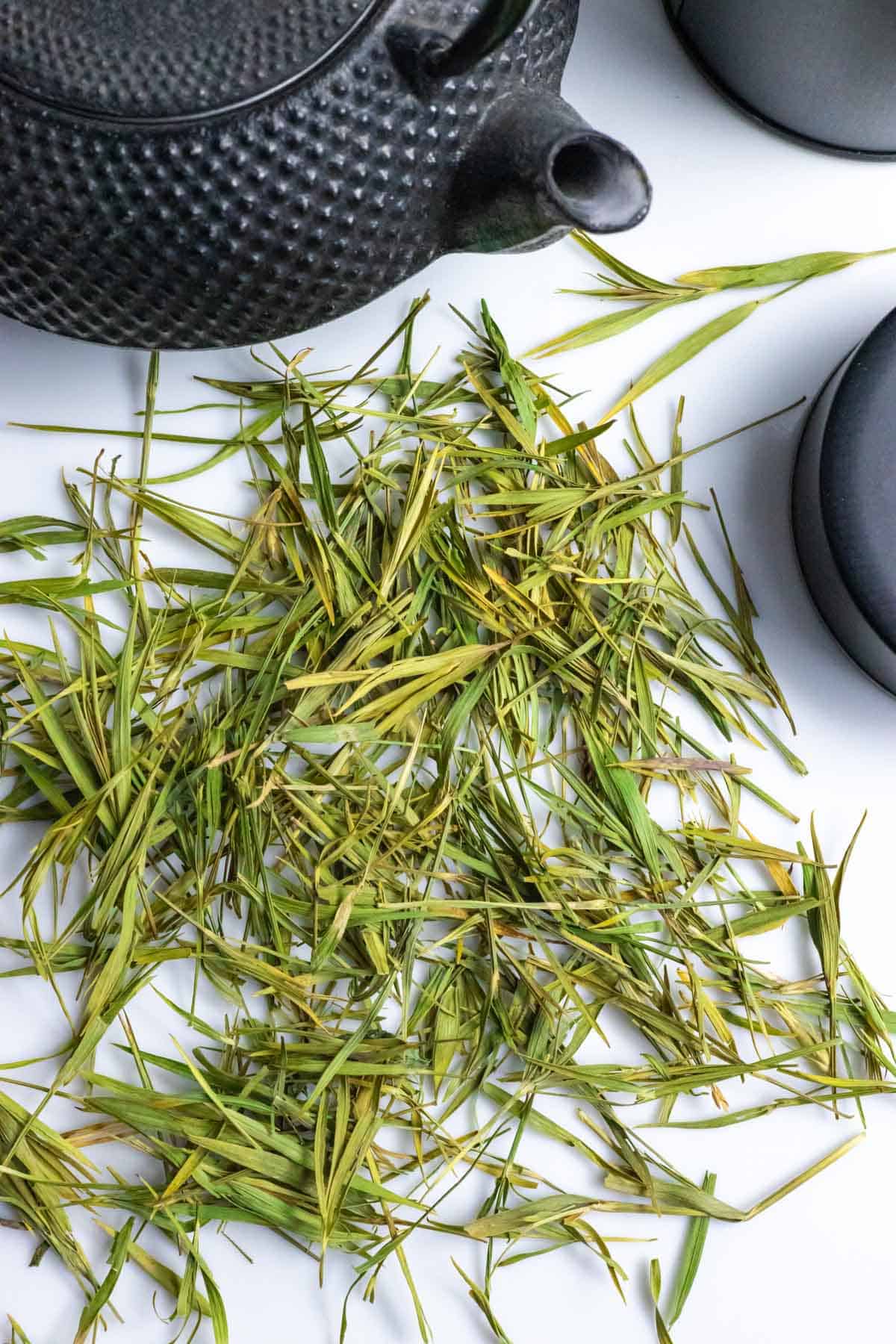
Other recipes to serve with bamboo tea
- Bibimbap bowl - The Ultimate Meal
- Asian Tuna Salad (without Mayo)
- Keto Lo Mein with Low Carb Asian Noodles
- Homemade Asian Cabbage Rolls
This post contains affiliate links. As an Instacart and Amazon Associate, I earn from qualifying purchases.
📖 Recipe
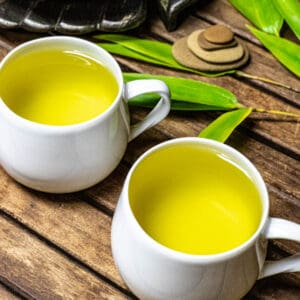
Bamboo Leaf Tea
Ingredients
- 1 teaspoon bamboo leaf tea (loose or 1 tea bag)
- 8 ounces water (filtered is best)
Instructions
- Heat water to 200 °F
- Add loose leaves to a tea ball or tea basket or place one tea bag into a cup or tea pot
- Pour heated water over tea to fill cup or pot and steep 4 minutes
- Repeat for additional infusions
Notes
Brewing and serving notes
You can re-steep 1-3 times based on your personal tastes. I sometimes will add a little more tea to a 2nd and 3rd infusion for a bit more strength. Serve with a squeeze of lemon, light sweetener or simply by itself (my favorite).Variations
This brew blends very well with other green teas.- Add a few jasmine pearls for a floral cup
- Combine with your favorite green or white tea
- Use with other herbs or herbal blends, such as chrysanthemum flower, goji berries, chamomile, mint or lemon balm.
Nutrition
*Net carbs = carbohydrates - fiber
Nutritional information is an estimate, calculated using online tools and does not include optional ingredients unless otherwise indicated.

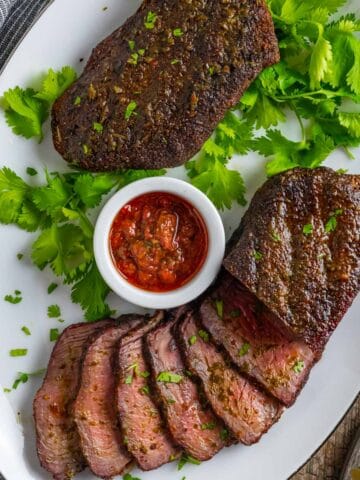
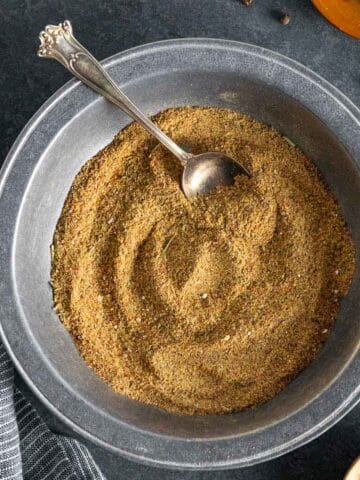

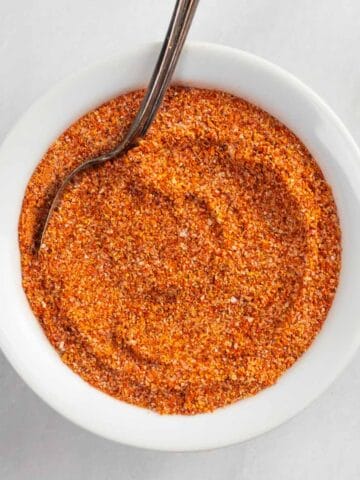
Jessie
I finally bought some of this online and I love it! I can't tolerate caffeine and many decaf green teas are too bitter, but this is perfect. Nice article, btw!
Tracey Hatch-Rizzi
Hi Jessie,
I'm so glad you like the post and the tea! I agree it's difficult finding a good quality decaf green tea that not's bitter. It's kind of hit-or-miss in that regard.
Enjoy,
Tracey